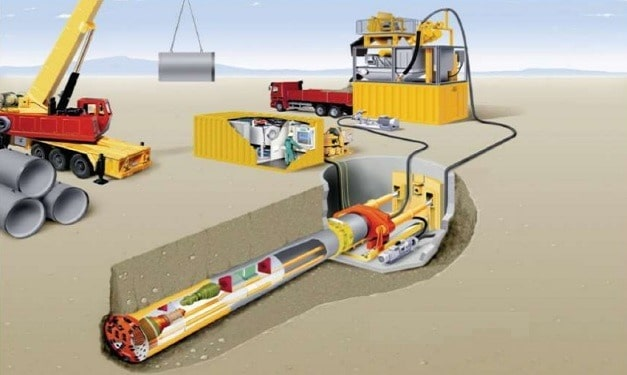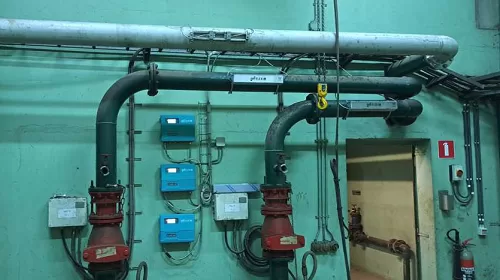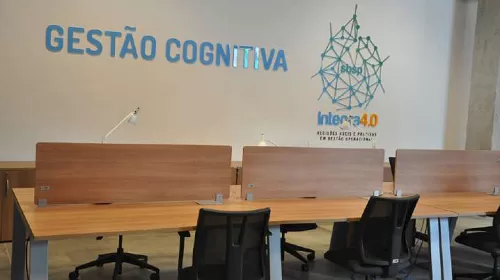Across any industry, staying on top of asset conditions is vital for safety, efficacy, and budget forecasting. Stormwater systems are no exception. Visual inspections of material storage and outdoor processing areas, as well as discharge areas and their surrounding environments are essential to a well functioning stormwater system. Over time, asset integrity begins to dwindle, and having consistent condition intel is the only way to minimize risks of contamination, flooding, blockages, and collapsed pipes.
What is Examined in a Stormwater Inspection?
Depending on the size of the site location, stormwater systems can be immense. With the potential to affect millions of citizens or contaminate massive plots of land in the event of a system failure, detailed inspections are vital. When inspecting a stormwater system, there are a variety of potential issues that can be cause for concern.
- Cracks
- Leaks
- Offsets/Disjoints
- Ovality
- Blockages in Pipes/Sediment Build-up
- Foreign Debris
- Corrosion
- Collapses
- Status of previous repairs
Why is a Stormwater Inspection Important?
It is crucial to manage stormwater for several key reasons. With the proper tools, inspections are a non-invasive, low-risk preventative measure against issues, from the health of local waters and aquatic life to flood risk mitigation.
- Maintain the Hydrologic Cycle
Improperly managed stormwater can reduce moisture replenishment in the soil and minimize groundwater recharge. Soil moisture is essential for vegetation, while loss of groundwater recharge can severely reduce stream baseflow, necessary for aquatic life. By managing stormwater correctly, the hydrologic cycle can be maintained to ensure healthy plant and aquatic life.
- Prevent Flooding
Without adequate stormwater maintenance, the risk of flooding, especially in urban areas, is greatly increased. As water cannot be absorbed into the concrete that covers large swaths of towns and cities, the excess water from rain and thunderstorms must be managed to prevent loss of life and property damage by flooding.
- Prevent Stream Erosion
While erosion is a normal part of stream behavior, excess stormwater can greatly increase the amount of erosion as abnormal amounts of water enter streams during storms. This extra water increases both the volume and rate at which water – and the sediment in the water – is delivered to streams. This extra water can increase erosion on stream banks and beds, damaging the natural form of these streams. The degradation of these streams can lead to a massive decline in plant and animal diversity. Proper stormwater management can effectively mitigate these risks.
- Forecasting for Maintenance Budget Optimization
While no future outcome is 100% predictable, inspection report data is a beneficial tool for educated predictions of budget allocation. By following a dedicated asset health grading system, facilities should be able to narrow down to the year when maintenance will be required. Having this information on hand lowers the risk for costly surprise repairs or large-scale collapses.
How is a Stormwater Inspection Conducted?
In order to conduct a proper inspection, a full visual inside the length of the pipeline is required. Depending on the pipe dimensions and water levels, this can either be done by manned entry or remotely using ROVs or Pipe Crawlers. Generally, in order for a pipe to be entered safely, the diameter must measure a minimum of 48” (122cm). In modern practice, portable robotic solutions streamline visual inspections for safety, access a wider variety of pipes, and instantaneously run reports.
The Tools Used
Pipe Crawler
Pipe Crawlers are an extremely effective way to inspect dry or partially submerged stormwater pipes. Stormwater pipes are often corrugated steel, HDPE, or concrete. Opting for pneumatic tires, tracks, or rubber wheels are ideal for traction on these materials, being adept at traveling through mud, sand, or for getting over debris.
ROV
For fully submerged large diameter pipes, ROVs are the most effective tool for visual inspections, offering intuitive controls and tilt cameras to make it incredibly easy to get crisp visuals of the entire pipeline. One of the drawbacks of a ROV inspection is that the entire pipe must be filled with water for a full survey.
Floats
For partially submerged, large diameter (900mm/36”+) pipes, floats can be a viable option. Floats can provide multi sensor capability and can travel long distances, but generally need significant flow to operate. For extremely large tunnels that are dry, manned entry is still a reasonable option. However, deploying a crawler is the safest alternative.
Reporting Software
Visual inspections provide integral information to municipalities or organizations about the status of their storm and sewer infrastructure. Using tested and validated reporting programs ensure that teams are provided a convenient import and export using the NASSCO file.
There are several NASSCO certified software options that are used to document PACP inspections. Pipe Trekker offers straightforward WinCan and POSM software compatibility, and integration with GraniteNet, ITPipes,and CTSpec, among others.
How Pipe Trekker can Make a Difference in Storm Water System CCTV Inspection
Implementing a Pipe Trekker crawler or Deep Trekker ROV for stormwater inspections empowers operators to conduct inspections safer and easier than ever before. From 2011 – 2018, 61 fatalities were reported on the job inside a manhole, sewer system, or storm drain. With the use of remote inspection vehicles, operators never have to enter a confined space.
Town of Renfrew – Case Study
The town of Renfrew is a small municipality, with a storm and sanitary system including 89 km (55 miles) of pipe. In 2005, Renfrew hired a CCTV service company to inspect 75% of their system, totaling $400,000 to complete. The town used to call on a contractor 10 – 12 times a year to provide CCTV services.
Mission Objective
Renfrew understood that CCTV camera inspections of storm water pipes ensure the integrity of the system, and minimize risks of contamination, flooding, blockages and collapsed pipes, although the high cost of inspections limited their abilities to do so. Their mission was to reinvent this process in order to minimize these sunk costs for continuous inspections while maintaining employee safety.
Equipment Used
A Pipe Crawler was a perfect solution for Renfrew’s high inspection costs. At the time,this system cost USD$13,000 to purchase, and gave their internal staff the ability to effectively inspect pipelines 8 – 36” in diameter.
Internal, on-board batteries mean that no generators or topside power sources are required. Traditionally, CCTV inspection systems require a dedicated truck for all of the components including a tether, winch, and power source. The crawler packs down into two carrying cases and can be set up and deployed in less than a minute.
Results
Nearly immediately upon purchase, everyone on the municipality’s team was able to operate the handheld controller, maneuver the CCTV camera and view the live video feed on the unit’s super-bright integrated screen. The first day of ownership, Renfrew successfully used the crawler to inspect a 10” storm pipe that would have previously been contracted out. “Another reason we opted to purchase the equipment was to deploy the camera on our schedule rather than waiting on a contractor.” – Lane Cleroux, Town of Renfrew
Toronto Water – Case Study
Mission Objective
The goal of this particular mission was to evaluate the condition of a combined sewer and storm water tunnel for Toronto Water. PipeTek needed to provide a report of the tunnel and associated pump and intake structures to determine the best next steps for managing the structure.
Equipment Used
Since this was a 530m long, fully submerged tunnel, the REVOLUTION ROV was chosen for the task. Longer tunnels with sediment in the bottom proved to be more difficult for pipe crawlers, robots that PipeTek had significantly more experience with at the time.
The problem with pipe crawlers is that their wheels or tracks stir the sediment, obstructing the view of the tunnel. They also have a shorter range of view, because their cameras can only raise so far from the bottom of the tunnel. Human entry in this long of a tunnel would be far too dangerous. By utilizing a free swimming ROV with an imaging sonar, PipeTek was able to capture a thorough report of these tunnels and structures.
Results
Overall, this was a complete success despite having zero visibility for the camera. Using the imaging sonar combined with the flexibility of the rotating camera head on the REVOLUTION, PipeTek was able to identify several points of interest for Toronto Water to evaluate and plan to reinspect, such as protruding laterals, pits, cracks, and sediment levels. Not only were these points of interest located and photographed, they also were able to measure these with the sonar tools available.
Sustainable Solutions for Effluent Treatments
Whether the concern is to maintain water quality or supply consistent intel on asset conditions, key challenges can be identified easier by robotic CCTV inspections. The integrated sondes of the Pipe Trekker A-Series greatly improve efficiency. Offering a visual inspection alongside location identification, workers can pinpoint exact locations of concern for targeted section maintenance.





